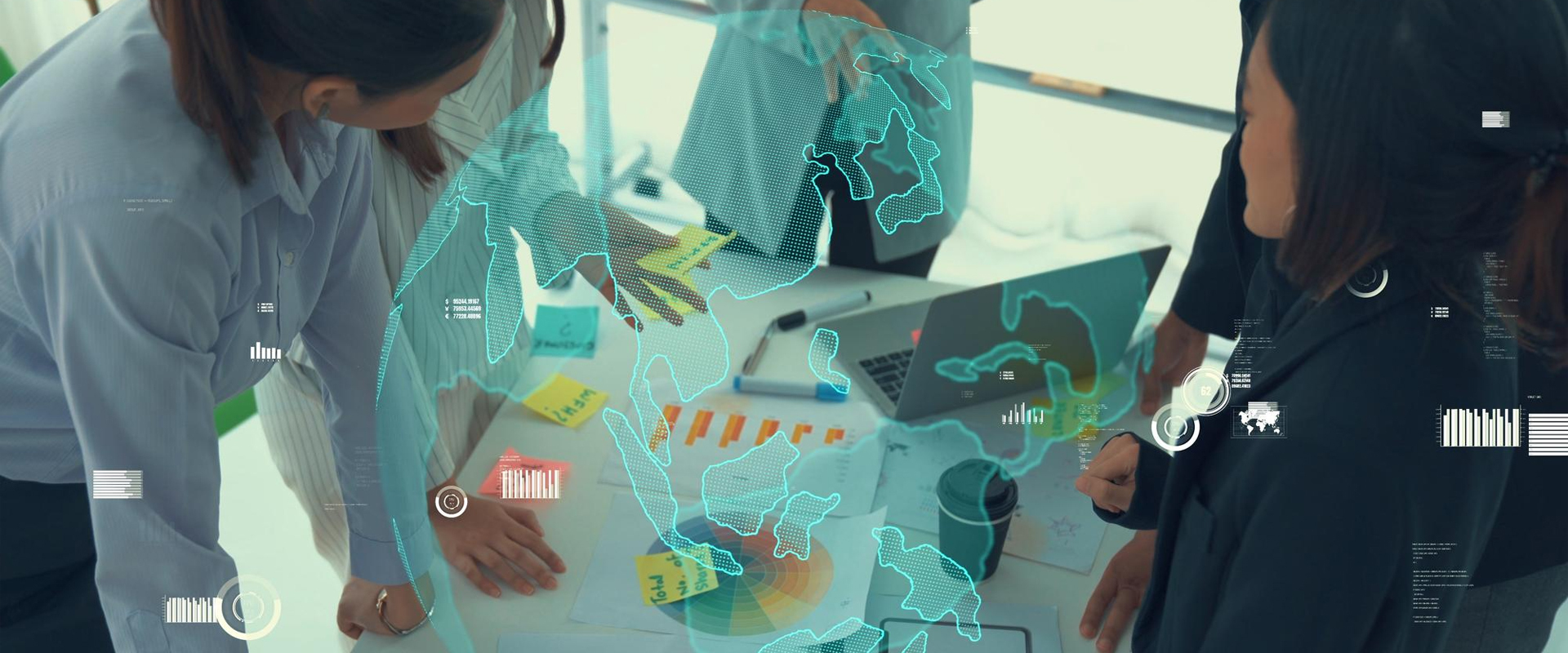

The Impact of Anonymized and De-identified Data on Research Integrity
Last Updated on August 19, 2024
Introduction
Data utilization is pivotal in shaping scientific advancements in the rapidly evolving research and technology landscape. Anonymized vs de-identified data, touted as guardians of privacy, have become integral to research across diverse fields. This blog explores the multifaceted impact of anonymized and de-identified data on research integrity, exploring the benefits, challenges, and ethical considerations associated with their usage.
Anonymized vs De-identified Data: An Understanding
Anonymized Data
Definition: Anonymized data undergoes a process that irreversibly removes all direct and indirect identifiers, rendering it impossible to link the data back to an individual.
Process: Achieving anonymization involves a comprehensive and irreversible data transformation, eliminating elements that could potentially identify individuals. This includes removing names, addresses, social security numbers, and other identifying information.
Utility vs. Privacy: Anonymization, when done effectively, provides a high level of privacy but may come at the cost of some loss of data utility. In the pursuit of complete anonymity, particular details that might be relevant for research purposes may be stripped away.
De-identified Data
Definition: De-identified data, on the other hand, involves the removal of direct identifiers while retaining certain vital elements necessary for research purposes.
Process: De-identification is a less stringent process compared to anonymization. It typically involves removing explicit identifiers like names and addresses but may retain other information, such as demographic data, which is relevant for research analysis.
Utility vs. Privacy: De-identified data aims to balance privacy and data utility. By retaining some contextual information, researchers can still glean meaningful insights from the data while minimizing the risk of identifying individuals.
Anonymized vs De-Identified Data: Key Differences
Irreversibility
Anonymization is intended to be irreversible. Once data is anonymized, there should be no feasible way to re-identify individuals. De-identified data, while removing direct identifiers, may still have the potential for re-identification if combined with other datasets or if certain contextual information is available.
Data Utility
Anonymized data tends to have a higher level of privacy protection but may result in a loss of data utility. However, by retaining some contextual information, de-identified data seeks to balance privacy with the practical usability of the data for research purposes.
Contextual Information
Anonymized data typically removes all contextual information, leaving only the core data elements. De-identified data, however, retains some relevant contextual information for research, allowing for a more nuanced analysis.
Anonymized vs de-identified: Risk of Re-identification
Anonymized data, if appropriately done, carries a lower risk of re-identification. De-identified data, while providing a reasonable level of privacy, may still pose a higher risk if additional safeguards are not in place.
Benefits of Anonymized vs De-identified Data
Privacy Preservation
Anonymization and de-identification serve as a shield, safeguarding individuals’ privacy while allowing researchers access to valuable information.
In healthcare research, for instance, patient records can be used without compromising sensitive details, fostering a balance between privacy and progress.
Promoting Open Science
Researchers are more inclined to share anonymized vs de-identified datasets, contributing to open science initiatives.
The accessibility of such data fosters collaboration and accelerates scientific discoveries by allowing diverse teams to analyze and interpret information.
Reducing Bias
By anonymizing data, researchers can mitigate biases that arise from preconceived notions or stereotypes associated with specific demographics.
This reduction in bias enhances the robustness and generalizability of research outcomes.
Encouraging Reproducibility
Anonymized vs de-identified datasets pave the way for reproducibility in research.
Other researchers can replicate studies, test hypotheses, and validate findings, contributing to the credibility of scientific endeavors.
Challenges Associated with Anonymized vs De-identified Data
Re-identification Risks
Despite meticulous anonymization efforts, re-identification is always risky, especially when integrating external datasets.
Advanced data linkage techniques could unravel anonymous data, compromising individuals’ privacy.
Loss of Context
De-identifying data often involves removing contextual information, potentially limiting the depth of analysis and understanding.
Researchers may need help interpreting findings accurately with the full context of the data.
Ethical Considerations in Anonymized vs De-identified
The ethical dilemma arises when researchers balance the need for data with the responsibility to protect participants.
Striking the right balance requires clear guidelines and ongoing ethical scrutiny.
Data Utility Concerns
Over-anonymization might lead to a loss of data utility, rendering the information less valuable for research purposes.
Researchers must navigate this delicate balance to maximize the usability of data without compromising privacy.
Anonymized vs De-identified: Impact on Research Integrity
Scientific Rigor and Validity
Anonymized vs de-identified data contribute to the scientific rigor of studies, enhancing the validity of research outcomes.
By minimizing biases and protecting against privacy breaches, the integrity of the research process is fortified.
Collaboration and Innovation
The availability of anonymized and de-identified datasets fosters collaboration and innovation within the research community.
Researchers can build on existing work, share insights, and collectively push the boundaries of knowledge.
Transparency and Accountability
Transparency in handling anonymized and de-identified data establishes accountability within the research community.
Researchers must adhere to ethical standards, ensuring the responsible use of sensitive information.
Public Trust in Research
Upholding the privacy of individuals through robust anonymization and de-identification practices contributes to building and maintaining public trust in research endeavors.
Trust is a cornerstone of ethical research, and respecting privacy is central to fostering this trust.
Ethical Considerations and Best Practices in Anonymized vs De-identified
Informed Consent
Obtaining informed consent from participants remains crucial, even when working with anonymized or de-identified data.
Transparency about data usage and potential risks ensures ethical conduct.
Constant Ethical Review
Regular ethical reviews of anonymized vs de-identified data processes should be integrated into the research workflow.
This ongoing evaluation helps researchers adapt to evolving ethical standards and technological advancements.
Data Governance Frameworks
Implementing robust data governance frameworks ensures that researchers adhere to ethical guidelines.
These frameworks can include data storage, access, and sharing guidelines, reinforcing responsible data management practices.
Educating Researchers
Researchers should be well-versed in the ethical implications of working with anonymized and de-identified data.
Continuous education and training programs can help researchers navigate ethical challenges and make informed decisions.
Regulatory Guidance in Anonymized vs De-identified Data
Fortunately, the FDA provides an Information Sheet on this subject, and the Office for Human Research Protections (OHRP) within the U.S. Department of Health and Human Services has addressed frequently asked questions. Moreover, the Secretary’s Advisory Committee on Human Research Protections (SACHRP) has also offered valuable recommendations. Despite the usefulness of this guidance, there remain situations where Institutional Review Boards (IRBs) must draw upon their expertise and sound judgment to arrive at optimal decisions.
Recruitment Announcements
Clinical trial sites can typically indicate in their advertisements that participants will receive compensation and specify the amount. However, according to FDA guidance, these payments should be seamlessly integrated into the text and not emphasized by bold formatting.
The compensation for clinical trial participants commonly falls into one of four categories: reimbursement, remuneration, bonus, or incentive.
Reimbursement
Sponsors are generally allowed by the FDA to reimburse clinical trial participants for necessary expenses they may incur. According to the 2018 guidance, the FDA does not raise concerns about returning travel expenses to and from the clinical trial site, including associated costs such as airfare, parking, and lodging, as it does not consider these to pose issues of undue influence. However, the guidance emphasizes that Institutional Review Boards (IRBs) should remain attentive to whether other aspects of proposed payment for participation could introduce undue influence.
For certain studies, particularly those focused on rare diseases, reimbursement can involve significant costs. This is because studies may require flying in patients from another country, providing accommodations for a one-week hotel stay, and more. Nevertheless, failing to cover these expenses could introduce bias into the study population, favoring individuals with more financial resources who can independently afford to participate. Moreover, from a justice perspective, this poses a problem that needs careful consideration.
Completion Bonuses & Incentive Payments
The primary concerns surrounding participant payments often revolve around bonuses or additional compensation provided after a study. However, there is apprehension that such a payment structure might incentivize participants to remain in an investigation even after experiencing adverse events or drug-related side effects. Nonetheless, this reluctance to forfeit extra payments for completed visits or miss out on a substantial bonus at the study’s end raises concerns about undue influence, remaining an area of focus for SACHRP and Institutional Review Boards (IRBs).
The FDA guidance acknowledges the acceptability of a small bonus payment but refrains from specifying an exact figure or range for such compensation. However, holding up to approximately 25% of the participant’s total payment as a bonus is generally deemed acceptable. Moreover, exceeding this threshold is likely to prompt scrutiny from an IRB. Furthermore, when the payment structure disproportionately emphasizes the completion of the study, it risks being perceived as inappropriate and potentially exerting undue influence on participants.
SACHRP recommends maintaining low financial and non-financial incentives for clinical trials. Moreover, non-financial incentives may include services like entertainment, hairdresser appointments, or massages for participants in a Phase 1 study required to remain onsite for an extended period.
However, to mitigate the risk of undue influence associated with these benefits, it is crucial to clearly outline them, without exaggeration, in the consent documents. Instances where a participant may receive only partial or no payment should be explicitly described, and the payment schedule must be stipulated. For example, if a study involves six visits, and a participant discontinues after three trips, the consent document should clarify whether and when partial payment will be provided. While some participants may expect immediate payment for completed visits, it is common for sites to wait until the study concludes for administrative efficiency. Furthermore, the consent document is pivotal in setting realistic expectations regarding payment distribution throughout the study.
Conclusion
The impact of anonymized vs de-identified data on research integrity is profound and complex. However, balancing utilizing data for scientific progress and protecting individuals’ privacy requires a nuanced approach. However, by navigating the challenges and embracing ethical best practices, researchers can harness the power of anonymized and de-identified data to drive innovation and collaboration and, ultimately, contribute to advancing knowledge while upholding the highest standards of integrity and ethical conduct in research.





